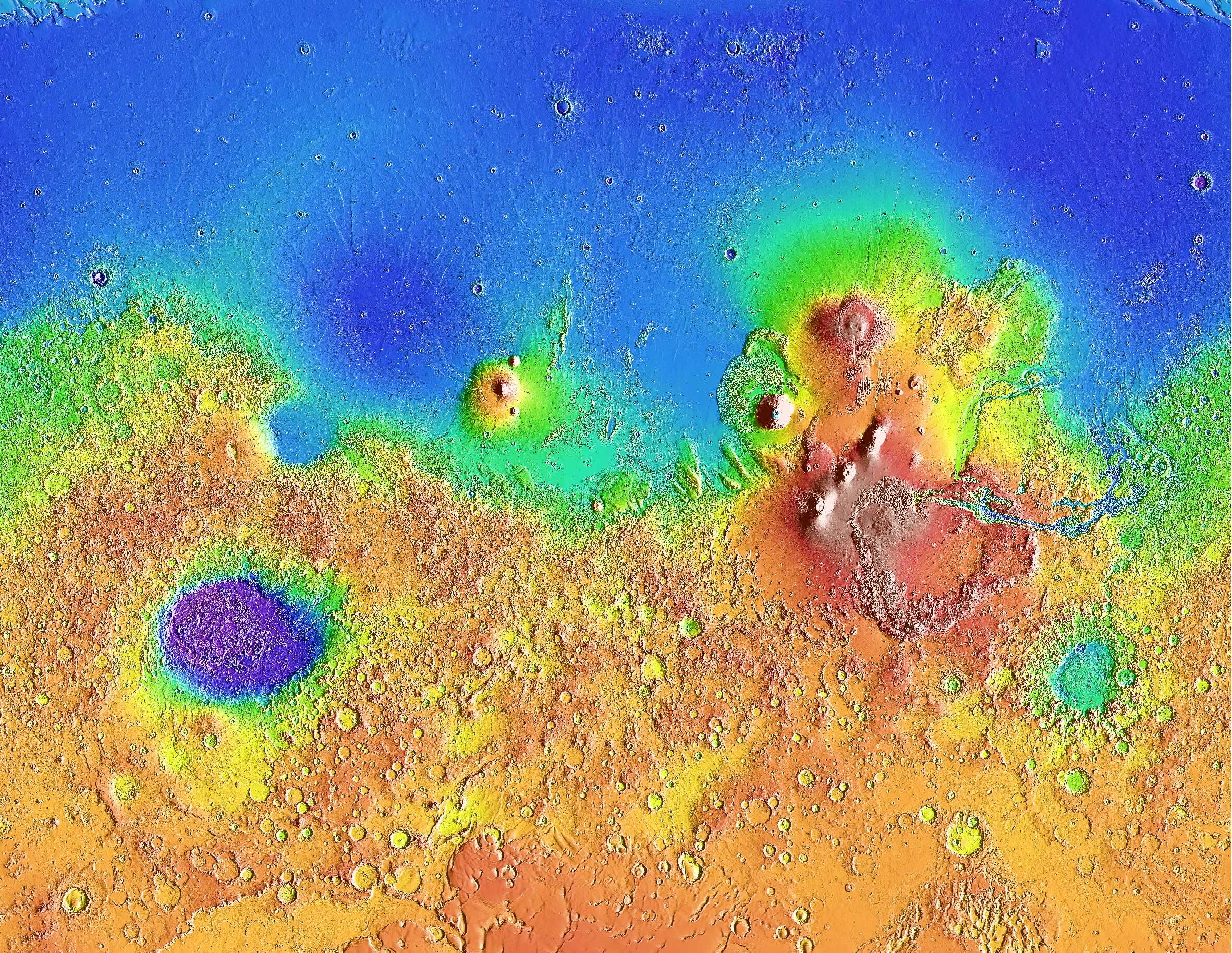Mars is home to one of the greatest mysteries in the Solar System: the so-called Martian dichotomy, a phenomenon that has perplexed scientists since it discovery in the 1970s. The Martian surface features a stark contrast between the southern highlands, cover about two-thirds of the planet’s surface, which rise five or six kilometers above the northern lowlands. Such a pronounced and large-scale dichotomy is unique within the Solar System.
A research group led by Prof. SUN Weijia's from the IGGCAS has unveiled the origin of the Martian dichotomy by analyzing marsquakes-seismic activity on Mars. Similar to earthquakes on Earth, marsquakes provide crucial insights into the internal processes driving Mars's geological evolution. This groundbreaking work was published in Geophysical Research Letters.
The origin of the Martian dichotomy has long been debated, with two main hypotheses proposed: massive impacts from space by giant impactors (~2,000 kilometers in diameter) or large-scale mantle convective within the planet. To investigate this competing mystery, researchers used low-frequency marsquake data collected during NASA's InSight mission, which operated between 2018 and 2022. Through state-of-the-art techniques, the team identified a new cluster of six marsquakes in the Terra Cimmeria region of the southern highlands and compared them with previously observed marsquakes from Cerberus Fossae in the northern lowlands. The comparison was based on how seismic waves from these events propagated to the InSight seismometer.
Subsequently, the scientists calculated the quality factor for seismic waves from each set. The quality factor measure how much a seismic wave weakens as it travels through Mars's interior. The study revealed that seismic waves from Terra Cimmeria experienced greater attenuation (lower quality factor) compared to those from Cerberus Fossae. This indicated a significant difference in the physical properties of the mantle beneath the two regions. Further analysis linked the observed seismic attenuation to differences in temperature. The mantle beneath the southern highlands was found to reach temperatures of approximately 1,000°C, while the mantle beneath the northern lowlands was cooler, with temperature around 800°C or slightly higher.
The elevated temperatures in the southern mantle correspond to lower viscosity, promoting more dynamic mantle convection beneath the southern highlands. Overall, the scientists evidence that mantle convection is the primary driver of the Mars's dichotomy, rather than giant impacts as the alternative hypothesis.
The study was conducted in collaboration with Prof. Hrvoje Tkalčić from the Australian National University and was supported by the National Key Research and Development Program of China.

Figure: A map illustrating the ‘Martian dichotomy’. The southern highlands are depicted in yellows and oranges, while the northern lowlands shows in blues and greens. (Source: NASA / JPL / USGS)
Contact:
SUN Weijia
Institute of Geology and Geophysics, Chinese Academy of Sciences
E-mail: swj@mail.iggcas.ac.cn